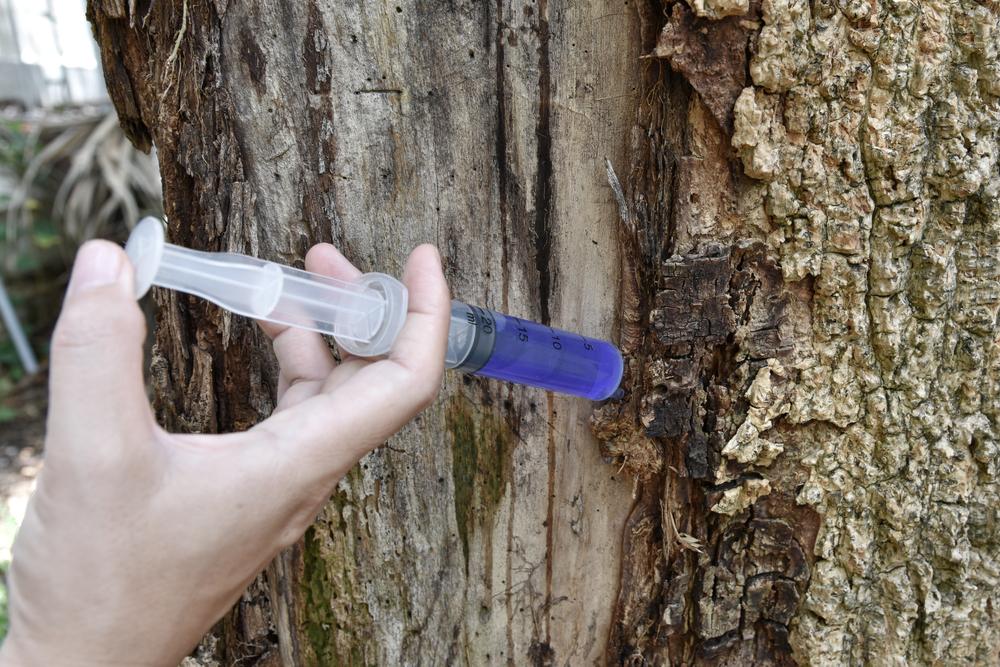Tree Drench Injection: Effective Nutrient and Pest Management for Tree Health
Learn about tree drench injection, a method for delivering nutrients and pest control directly to trees' root zones. For more information, use a quick search below.
Tree drench injection is a method used to deliver nutrients, fertilizers, or pest control substances directly into the root zone of trees. This technique is particularly effective for addressing specific nutrient deficiencies, promoting tree health, and controlling pest infestations. This article explores what tree drench injection is, its benefits, the process involved, and when to consider using this method.
What is Tree Drench Injection?
Tree drench injection involves injecting liquid solutions directly into the soil around a tree's root zone. This method allows for targeted treatment, ensuring that the tree receives the necessary nutrients or pesticides quickly and effectively. Unlike traditional methods of application, such as foliar sprays or granular fertilizers, drench injections minimize waste and reduce the risk of runoff, making them a more efficient choice for tree care.
Benefits of Tree Drench Injection

- Direct Nutrient Delivery: Nutrients are delivered straight to the root zone, ensuring that the tree can absorb them more efficiently than with surface applications.
- Reduced Environmental Impact: By minimizing runoff and leaching, tree drench injections help protect surrounding soil and water resources.
- Improved Tree Health: This method can effectively address specific deficiencies, promoting healthier growth and resilience against pests and diseases.
- Targeted Pest Control: Injections can deliver systemic insecticides or fungicides directly to the tree, ensuring that pests are treated at the source.
- Less Labor-Intensive: Compared to some traditional methods, drench injections can require less time and effort to apply, especially for larger trees.
Affordable Tree Drench Injection Methods
Tree drench injection is particularly beneficial in the following situations:
- Nutrient Deficiencies: If soil tests indicate deficiencies in essential nutrients such as nitrogen, phosphorus, or potassium, a drench injection can quickly address these needs.
- Pest Infestations: For trees suffering from pest problems, systemic insecticides delivered through injection can provide more effective control compared to surface treatments.
- Soil Compaction: In compacted soils where water and nutrients have difficulty penetrating, drench injections can enhance the availability of nutrients.
- Stress Recovery: Trees experiencing stress from drought, disease, or other environmental factors may benefit from the quick nutrient boost provided by injections.
The Process of Tree Drench Injection
Here’s a step-by-step overview of how to perform a tree drench injection:
- Assess the Tree's Needs: Identify the specific nutrient deficiencies or pest problems through soil testing or visual inspection.
- Select the Appropriate Solution: Choose a nutrient solution or pesticide that addresses the identified needs. It’s essential to follow label instructions and recommendations for the product.
- Prepare the Injection Site: Clear the area around the tree and create a series of small holes in the soil near the tree's drip line (the outer edge of the tree's canopy).
- Inject the Solution: Using a soil injector or syringe, carefully inject the solution into the holes, ensuring even distribution around the root zone.
- Water the Tree: After injection, watering the tree lightly can help distribute the nutrients further into the soil and promote absorption by the roots.
- Monitor the Tree: Keep an eye on the tree’s health after treatment, noting any changes or improvements in growth or vigor.
Tree drench injection is an effective and efficient method for delivering essential nutrients and pest control directly to the root zone of trees. This technique promotes healthier growth, enhances tree resilience, and reduces environmental impact. By understanding when and how to use tree drench injections, tree care professionals and homeowners can ensure the long-term health and vitality of their trees.











